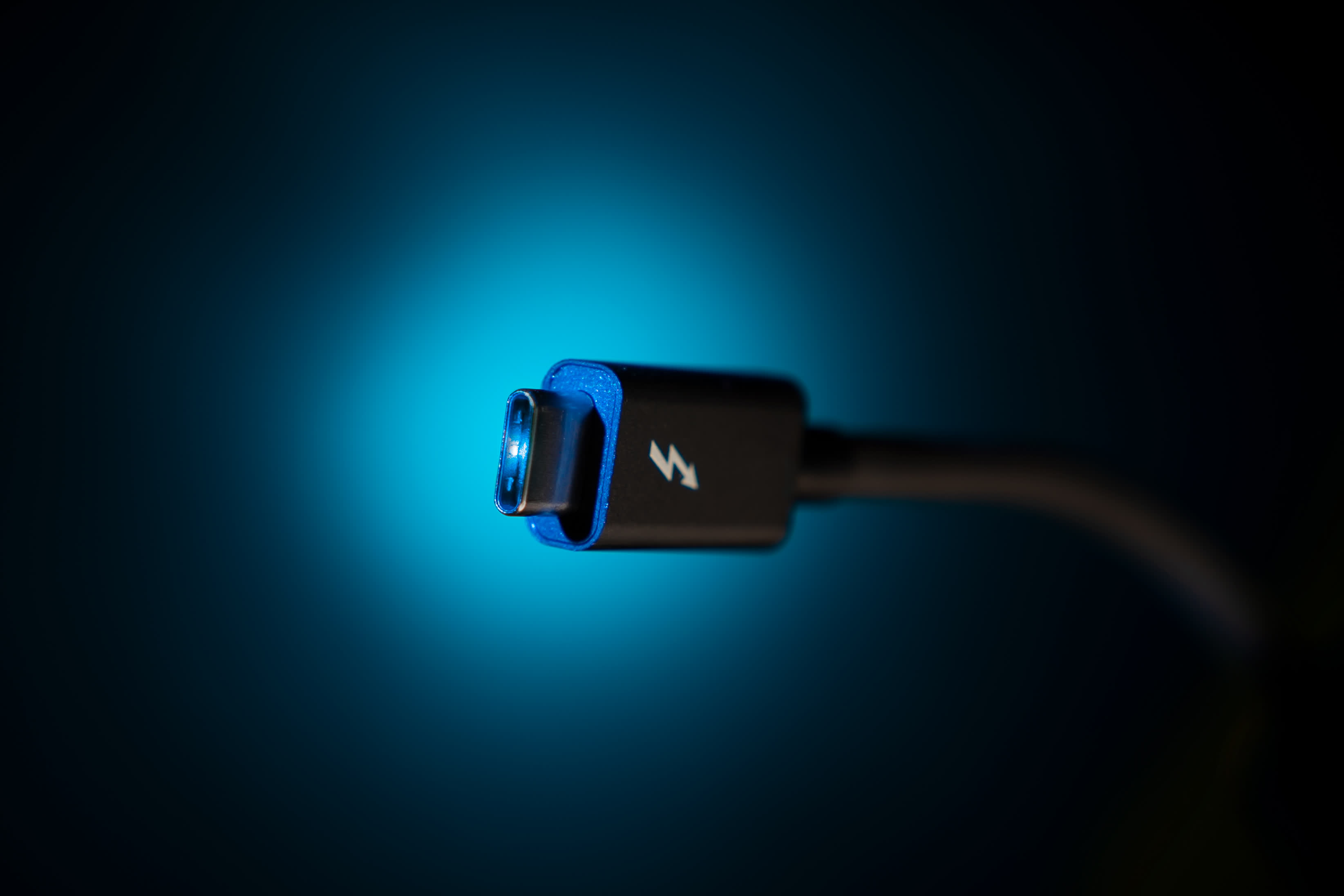Something to look forward to: Intel executives may be good at overseeing technological innovations, but sometimes they share their enthusiasm on social media and unintentionally reveal bits about ongoing projects that aren't supposed to be public yet. Such is the case of Gregory M. Bryant, GM of Intel's Client Computing Group, who inadvertently revealed on Twitter what the company has in store for the next generation of Thunderbolt.

Thunderbolt 4 was made official last year with the debut of Intel's 11th-gen Core Tiger Lake CPUs, bringing a number of improvements in terms of security and display support, while keeping the same 40 Gbps bandwidth as Thunderbolt 3. However, a recent leak indicates it won't be long before Thunderbolt 5 comes out.
During a recent visit at Intel's research and development labs in Israel, Bryant took a series of photos and shared them on Twitter. In a now deleted tweet, Bryant posted a photo of what appears to be a Thunderbolt 5 demo setup and a wall poster detailing the technology behind it.
Day 1 with the @intel Israel team in the books. Great views…incredible opp to see @GetThunderbolt innovation …a validation lab tour and time with the team…can’t wait to see what tomorrow brings! pic.twitter.com/GKOddA6TNi
— Gregory M Bryant (@gregorymbryant) August 1, 2021
The poster read "80G PHY Technology," which suggests the new standard will offer a theoretical bandwidth of up to 80 Gbps -- double that of Thunderbolt 4. There's also a line that reads "USB 80G is targeted to support the existing USB-C ecosystem," indicating that Thunderbolt 5 will continue to use the same USB Type-C connector as its predecessors.
The magic behind the improved transfer speeds in Thunderbolt 5 are apparently made possible thanks to a "novel PAM-3 [Pulse Amplitude Modulation 3-level] modulation technology." As explained by AnandTech's Ian Cutress, this refers to a data transmission protocol where the data line can carry a 3-bit data signal encoded with logical +1, 0, and -1 values. For instance, "000" is "-1" followed by "-1", while "001" is "-1" followed by "0," and so on.
At 1.5 bits per symbol, PAM-3 sits right between other encoding methods such as NRZ and PAM-4 that achieve 1 and 2 bits per symbol, respectively. But more importantly, this allows PAM-3 to achieve a higher bandwidth that of NRZ without the limitations of PAM-4, which requires more complex equipment due to signal quality issues. In other words, we could see cheaper cables for the next Thunderbolt standard.
Intel is supposedly testing a 6nm chipset for Thunderbolt 5, which means the company will likely tap TSMC to make it. At this point, all we have is this unintentional sneak peek into the new technology, but Intel seems to be onto something here, especially as it retains compatibility with the growing USB-Type C ecosystem.